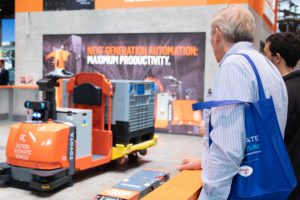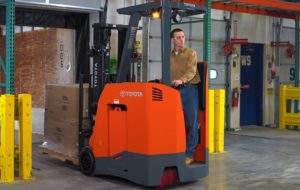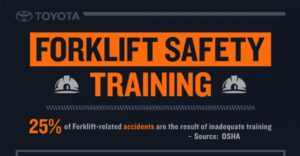Archive for August, 2019
Why You Need a Workplace Safety Program
Workplace safety and forklift training mean developing processes to eliminate personal injuries in the workplace. A well-thought–out safety program includes identifying hazards, evaluating workplace safety policies, and regularly training employees. If this sounds like standard business practice to you, then you’ll probably be surprised by the results of a 2017 survey about workplace safety.
- 17 percent of all small business employees surveyed say they never receive workplace safety training
- 25 percent of micro-businesses employees (9 or fewer employees) say they haven’t received workplace safety training
- 40 percent of small business employees say their employer does not display OSHA signage prominently, or they are not sure if it is displayed
These are shocking numbers considering OSHA has a list of employer responsibilities to provide a safe working environment. OSHA’s website is full of information so that any business can stay informed about OSHA compliance.
Safety policies and programs are essential to safeguard the well-being of employees, but are there also financial and business reasons to focus on workplace safety? The answer is yes. Here are six ways a workplace safety program can help your business.
- Improve efficiency. Employees and forklift operators without training are inefficient, not to mention unsafe.
- Lower your risk of OSHA fines and penalties. One safety-related injury can result in penalties as high as $100,000 per incident.
- Reduce your risk of civil or criminal liability. A company will most likely face a lawsuit if an employee gets hurt on the job. Even worse, it can be a crime to be negligent in health and safety requirements.
- Reduce worker’s compensation claims and sick days. Teach employees how to reduce repetitive actions to prevent unnecessary strain on the body. A pain-free employee is a happy and productive worker.
- Create safety partners. A trained forklift operator or warehouse employee will help prevent accidents. They will not only recognize and report hazards but also model optimal safety behaviors to the rest of the team.
- Attract and retain valued talent. Good employees won’t tolerate working for a company that doesn’t value safety. They will probably point out a safety issue and know they have the right to refuse dangerous work.
Need help updating your workplace safety program? Contact us for a free safety consultation and information about forklift training classes.
Finding the Bright Side of Automation
Automation is a hot topic. More companies are increasingly turning to robotics and technology to automate processes to increase efficiency and create safer working environments.
Definition of Automation
So, what exactly is automation? Automation refers to any automated process that reduces or eliminates the need for human involvement.
 After reading the definition, it makes sense to think automation will result in lost jobs. While automation will eliminate some low-wage repetitive jobs, it will also help create jobs in other areas. For example, companies need technicians to perform maintenance on robots, conveyors, and other automation-related equipment, thereby creating more high-paying technician jobs.
After reading the definition, it makes sense to think automation will result in lost jobs. While automation will eliminate some low-wage repetitive jobs, it will also help create jobs in other areas. For example, companies need technicians to perform maintenance on robots, conveyors, and other automation-related equipment, thereby creating more high-paying technician jobs.
What Does the Future Hold?
A report by the World Economic Forum titled “The Future of Jobs 2018” estimates that artificial intelligence and robotics will create nearly 60 million more jobs than it destroys by 2022. The report finds that while automation technologies and artificial intelligence could see 75 million jobs displaced, another 133 million new roles may emerge, which equals 58 million new jobs created by 2022.
Some redundant roles that will decline include data entry, accountants, delivery drivers, and factory workers. The bright side is new jobs will emerge like robotics engineers, innovation professionals, solution designers, and people and cultural specialists.
Not everyone has to worry about being affected by automation. Oxford University researchers predict that 47% of American jobs may face automation over the next two decades. It means 53% of jobs will be completely unaffected.
This shift in the job market can be a positive change if you look at it this way: Some workers may lose their low-paying, often pain-inducing, repetitive jobs, but they’ll have plenty of opportunities to pursue entirely different careers in new emerging positions. And don’t worry; robots won’t take over jobs that require human interaction, like doctors and teachers. However, manufacturing, transport, and administration employment are likely to decline.
Do you want to learn more about how automation can help your company? Contact us for more information.
Forklift Safety Protects Your Bottom Line
 Every company has a moral and legal obligation to keep its workers safe. Many companies have an ongoing forklift safety program, but some don’t prioritize safety. Especially when money is tight. Most of the time, these companies don’t realize that spending money on safety now could save them from headaches in the long run, or they don’t understand the actual costs of a safety-related incident.
Every company has a moral and legal obligation to keep its workers safe. Many companies have an ongoing forklift safety program, but some don’t prioritize safety. Especially when money is tight. Most of the time, these companies don’t realize that spending money on safety now could save them from headaches in the long run, or they don’t understand the actual costs of a safety-related incident.
Ignoring a safety program isn’t worth the risk.
There are severe risks to forgoing a safety training program. It doesn’t take a major accident to cost money and cause significant issues for the entire company. Here is a list of potential problems you could face, even with a minor safety-related incident.
- A key employee is out due to injury
- The cost of paying and training someone new to cover the injured employee’s position
- Damage to the equipment
 Lost production time
Lost production time - Cost to employee morale
- Cost to your business reputation
- OSHA fines
- Investigation costs
- Legal fees
- Higher insurance rates
Find out the actual costs of a workplace injury
If that list wasn’t enough to convince you of the importance of a safety program, spend a little time on OSHA’s $afety Pays tool. It will tell you exactly how much a workplace injury could cost your business. The calculator breaks down the costs of 40 types of injuries and illnesses and shows the direct and indirect costs. And to drive home the importance of safety to your bottom line, the tool calculates the additional sales revenue you would need to generate to cover these costs. Check it out. It’s an eye-opener.
There are resources to help you.
We hope you see a safety program’s value and commit to putting safety above anything else. Here are several free resources and tips to help you stay on track:
- Check OSHA’s website for free publications and information. Know OSHA’s regulations and requirements, and make sure you certify your forklift drivers.
- Develop a “safety-first” program to encourage employees to report hazards.
- Join an online safety group specific to your industry where you can ask questions, get help, and learn from others.
- Sign up for Toyota Material Handling Solutions’ forklift training classes in Santa Fe Springs or at your location.
Don’t gamble with your future. Spend time and money on safety programs and forklift training now. Not only to protect your employees but to protect your bottom line.
Toyota Material Handling Solutions proudly supports OSHA’s Safe & Sound Week.
